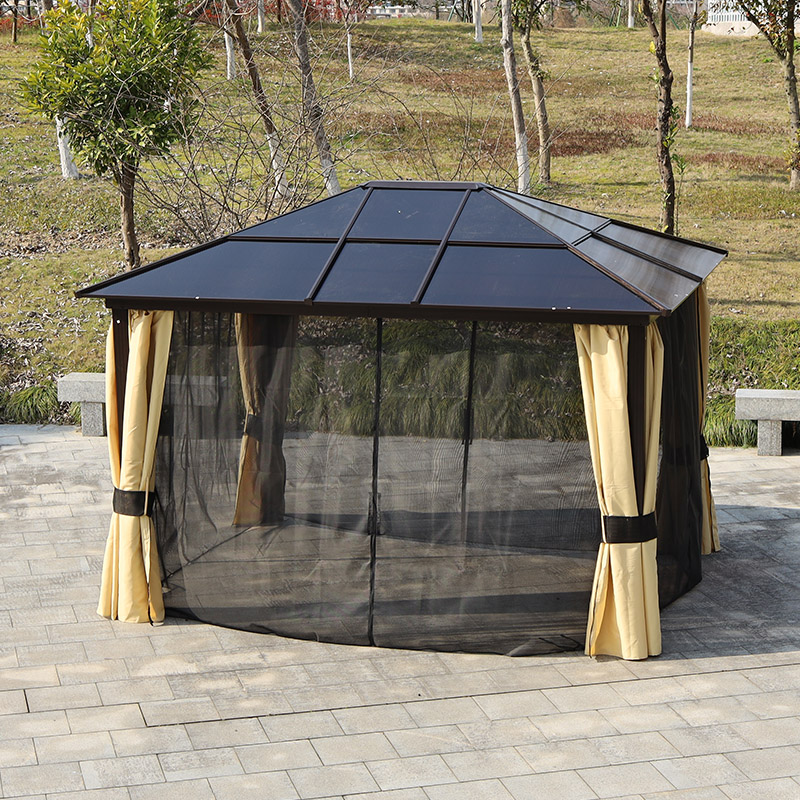2025-10-03
A Garden Hard Top Gazebo is now viewed as more than a seasonal garden feature. Across 2025, the outdoor living market is evolving as homeowners, hotels, and public spaces turn gazebos into semi-permanent architectural zones. Rising interest in sustainability, smart outdoor systems, and modern aesthetics are reshaping how gazebos are designed, built, and used.
The global demand for hard top gazebos continues to grow steadily. Market data from several design and construction indexes show that outdoor structure sales rose above 8% in early 2025, led primarily by aluminum and polycarbonate hard top models. Consumers increasingly seek long-lasting shelters that combine shade, durability, and modern style.
Unlike soft-top alternatives, a hard-top gazebo offers stronger protection against rain, heat, and wind. This has attracted urban homeowners, café owners, and resort operators looking for permanent outdoor lounges. Compact living trends in Europe and Asia are also fueling demand for multi-functional gazebos that double as dining or relaxation spaces.
Recent online discussions among architects and outdoor enthusiasts highlight a strong shift toward sleek, modular gazebo designs. Many now feature concealed wiring for lighting, integrated ceiling fans, or hidden channels that allow easy electrical upgrades. These details turn a standard gazebo into a usable outdoor extension suitable for all seasons.
Roof design innovation is another dominant topic. Homeowners increasingly prefer flat or double-tier roofs that allow better air circulation and light diffusion. These geometric changes enhance both comfort and structural performance. Ventilated panels reduce heat accumulation and improve airflow, keeping outdoor gatherings more pleasant during summer.

Material technology plays a vital role in defining performance and appeal. Aluminum and galvanized steel remain the preferred framework materials due to their balance of strength and corrosion resistance. Many brands now focus on powder-coated surfaces that maintain appearance under heavy UV exposure and humidity.
Roofing choices are expanding. Polycarbonate panels are trending due to their transparency and heat control ability. In contrast, coated metal sheets appeal to customers who favor strength and sound reduction during rainfall. The move toward recyclable materials reflects the broader sustainability goals driving outdoor construction.
Despite their appeal, hard top gazebos face challenges in logistics and assembly. Consumer forums highlight concerns over heavy roof panels, complex installation, and limited adaptability in small yards. These issues encourage designers to focus on modular kits that can be easily assembled using basic tools.
Cost remains a consideration. Rising metal and resin prices affect retail pricing and global trade balance. To manage this, manufacturers are shifting toward modular manufacturing, using shared molds for different models. This approach lowers production costs and makes replacements easier for end users.
Smart features are the next major step. Sensors that detect sunlight or temperature changes are now being discussed across home improvement forums. Automated louvers that open or close for ventilation could soon become standard in high-end models.
Urbanization also plays a role. Rooftop gazebos are becoming a trending topic among city dwellers who seek small yet functional relaxation zones. Designers are responding with compact hard top gazebos that fit limited areas but retain high weather resistance and stylish form.
Conclusion
The Garden Hard Top Gazebo has become a defining feature of contemporary outdoor design. In 2025, trends highlight sustainable materials, modular systems, and smart functionality, emphasizing the market’s shift toward structures that balance style, practicality, and lasting performance.